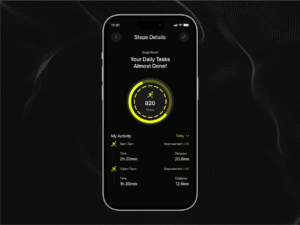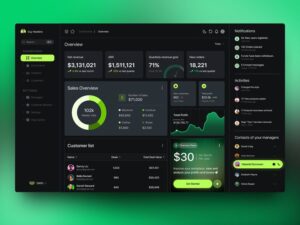
Making great content is only half the battle. You could write the most amazing blog post ever, but if no one finds it, does it really help your business? Many content creators miss this key step: understanding what people are actually searching for online. This often leads to content that sits unseen. Our goal is to attract the right audience to your website.
So, what are “best performing keywords”? They are more than just popular search terms. The best keywords are super relevant to your topic. They match exactly what a user wants to find. They also bring in people ready to take action, like buying something or signing up for your service. This guide will show you how to find these powerful keywords.
Understanding Your Audience and Goals
Finding the right keywords starts with knowing who you want to reach. Your keyword research needs to line up with the people you are trying to help.
Define Your Target Audience
Imagine the perfect reader for your content. Who are they? What do they care about?
- Creating Buyer Personas
Detailed personas help you pick the best keywords. Think about their age, job, and hobbies. What problems do they face? What are their biggest questions? Knowing these things guides your keyword choices. For example, a parent might search for “toddler sleep tips,” while a professional chef might look for “sous vide cooking methods.” What specific questions does your audience ask online? Brainstorm as many as you can.

Align Keywords with Business Objectives
Your keyword strategy should always lead back to your business goals. What do you want people to do after they read your content?
Identifying User Intent (Informational, Navigational, Transactional, Commercial)
Martin Munene Nkonge
Different keywords show different reasons for searching.
- Informational: The user wants to learn something. Keywords often start with “how to,” “what is,” or “why.” Example: “how to bake a cake.”
- Navigational: The user wants to find a specific website or page. Example: “Facebook login.”
- Transactional: The user wants to buy something. Keywords include “buy,” “price,” “discount,” or “order.” Example: “buy chocolate cake online.”
- Commercial: The user is researching before a purchase. Keywords often include “best,” “review,” or “compare.”
Knowing this intent helps you pick keywords for different types of content.
Mapping Keywords to the Buyer's Journey
Think about the steps a customer takes before buying.
- Awareness: They just learned they have a problem. Keywords might be very broad.
- Consideration: They are looking at solutions. Keywords become more specific.
- Decision: They are ready to choose a product or service. Keywords are very direct.
Your keywords should help users at every stage, from first learning about a topic to making a purchase.

Leveraging Keyword Research Tools
You don’t have to guess what people are searching for. Many tools can help you find valuable keywords.
Exploring Free Keyword Research Tools
Start your keyword hunt with tools that cost nothing. They offer a good look at search trends.
- Google Keyword Planner
This tool from Google is a classic. You can use it to find new keyword ideas. It also shows you how many times people search for a term each month. It helps you see how competitive a keyword is. Be sure to check its “Keyword Ideas” and “Related Keywords” sections. These are goldmines for new content topics.
- Google Search Console
This is another free Google tool. It shows you which keywords people are already using to find your site. You might find keywords you rank for but could improve on. Look at the “Performance” report. See which terms bring you impressions (your site showed up) and clicks. This helps you improve existing content.
Utilizing Paid Keyword Research Tools
Premium tools offer much deeper insights. They give you a real edge over your competition.
- SEMrush / Ahrefs / Moz Keyword Explorer
These top-tier tools do a lot more. They show you a keyword’s difficulty, which tells you how hard it is to rank. They analyze the search results page (SERP). They even let you see your competitors’ best keywords. For example, you can see exactly which keywords drive traffic to a competitor’s blog posts. These tools are powerful. Many studies show businesses using professional SEO tools often see a significant boost in their online results.

Analyzing Keyword Metrics for Performance
Finding keywords is just the start. You need to look at key numbers to pick the best ones.
Search Volume vs. Keyword Difficulty
You want to attract a big audience. But you also want a good chance of showing up in search results. There’s a balance.
- Finding the Sweet Spot: High Volume, Low Difficulty
The best keywords have decent search volume but are not too hard to rank for. “Long-tail keywords” are great for this. These are longer, more specific phrases, like “best waterproof hiking boots for women.” They usually have lower search volume. But they also have less competition. Plus, people searching for long-tail terms often know exactly what they want. Prioritize keywords that have good search numbers and a difficulty level you can realistically beat.
Understanding Click-Through Rate (CTR) Potential
How many people click on your link when it shows up in search results? This matters a lot. Your keyword choice and how your listing looks on Google impact clicks.
- Optimizing for Featured Snippets and Rich Results
Some keywords are likely to trigger special Google features. These include featured snippets (the direct answer at the top) or rich results (like recipes with star ratings). You can structure your content to win these spots. Answer common questions directly and clearly. Make your answers concise. This helps Google pull your content for these special features.
Relevance and User Intent Score
The numbers are important, but they are not everything. A keyword must perfectly match your content.
- Matching Keywords to Content Topics
Make sure your chosen keyword truly fits your blog post. If your article is about “healthy breakfast ideas,” don’t try to force in “quick dinner recipes.” The keyword should perfectly align with the topic. This makes your content valuable to the reader.

Competitive Analysis for Keyword Opportunities
Look at what your rivals are doing. You can learn a lot from their successes.
Identifying Your Competitors' Top Keywords
What keywords are bringing traffic to your competitors? Learn from their wins.
- Using Competitor Analysis Tools
Tools like SEMrush and Ahrefs are perfect for this. You can plug in a competitor’s website. These tools will show you the keywords they rank for. Look for keywords that drive a lot of traffic to their blog posts. Can you create even better content for those terms?
Analyzing Search Engine Results Pages (SERPs)
When you search a keyword, what comes up? Look closely at the first page of Google.
- Assessing Domain Authority and Content Quality
See who is ranking. Are they big, well-known sites? Or smaller ones like yours? How good is their content? Can you make something much better? This helps you see if you have a real shot at ranking.
- Identifying Content Gaps
As you look at the SERPs, you might spot holes. Are there questions no one is answering well? Can you cover a topic more deeply? Finding these gaps gives you chances to create unique content.

Implementing and Refining Your Keyword Strategy
Finding keywords is just the start. You need to use them wisely and keep an eye on how they perform.
Incorporating Keywords Naturally into Content
Your content must be easy to read and helpful for people. Don’t just stuff keywords everywhere.
- Title Tags, Meta Descriptions, and Headings
Place your main keyword in your page title and meta description. These are what people see in search results. Use keywords in your headings (H2, H3) too. This helps Google understand your content’s main points.
- Content Body and Internal Linking
Weave your keywords into the main text of your article. Don’t force them. Use related terms and synonyms. This makes your content feel natural. Also, link to other useful pages on your own website. This helps both users and search engines.
Monitoring Keyword Performance and Adjusting
SEO is never a one-time job. You must keep watching and making changes.
- Tracking Rankings and Traffic
Use Google Analytics and Google Search Console to see how your keywords are doing. Are your rankings improving? Is more traffic coming to your site? This data tells you what’s working and what is not.
- Re-evaluating and Discovering New Opportunities
The online world changes fast. New trends pop up. Old keywords might lose steam. Regularly check your keyword strategy. Look at your performance data. Look for new keywords people are searching for. Constant learning is key to staying ahead in SEO.
Conclusion
Finding the right keywords is a core step for any content creator. It helps you reach the right people. Balance how popular a keyword is with how hard it is to rank. Always think about what the user wants. Use free and paid tools to find your best keywords. And remember to keep checking your progress. Start by picking a few strong keywords for your next blog post. Then, watch your content climb in search results.









